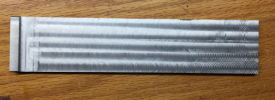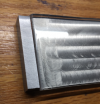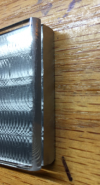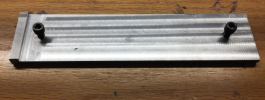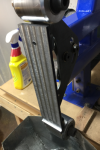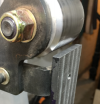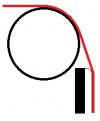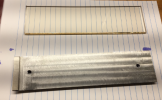- Joined
- Jun 3, 2019
- Messages
- 2,714
That is a good idea - using the mill to keep the tap aligned ---- ack, although I dont have collets .... just a 3/8" endmill holder. I could try the drill chuck - but not sure if it will have the grip to avoid the tap from slipping.I have used a Koolmist system when milling steel on my mini mill and that seemed to help. You shouldn't have any trouble tapping the holes if you use the mill to get the tap started. With steel, you probably want to turn the tap by hand and just use the mill to keep the tap aligned with the hole.
Have been doing some reading ..... apparently I should *really* have been using a 4-flute carbide endmill for this work on even mild steel. I used what I have - 2-flute HSS. Oh well .... the fun is in the learning - right???

